► CAR’s 2016 New York motor show review
► The highs, lows and highlights of the NYIAS
► News, themes and the best reveals of 2016
With the 2016 New York International Auto Show playing host to a long list of previews, unveils, concepts and technology demonstrations, you could be forgiven for missing out some of the more prominent points.
So, we’ve taken the liberty of condensing the key stories and trends for you, trooping around the Jacob Javits Convention Centre to bring you the hits, misses and highlights from the 2016 NYIAS.
The launch of a new variant of the latest MX-5 didn’t come as a surprise to many. Mazda had long been suggesting something was in the works and, after all, every iteration of the diminutive roadster to date has been offered with some form of fixed or folding hard-top. What few expected, however, was the adoption of a 991-gen Porsche 911 Targa-style motorised folding roof arrangement.
Credit where it’s due, the new MX-5 RF at least looks very smart from some angles, but was such a complicated solution really required? After all, the MX-5 has always been about simplicity and – admittedly to a lesser extent in recent generations – low kerb weights. Now it’s dealing with another 50kg, high up in its frame, and a whole host of additional, intricate electronics and mechanisms. How about a steering column that adjusts for reach first, if you’re going to start adding weight, so more drivers can fit in the MX-5 comfortably?
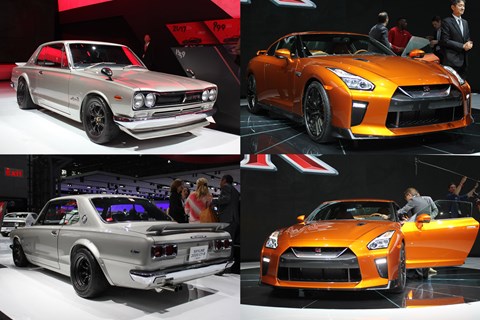
A line-up of heritage GT-Rs graced Nissan’s stand, including this stunning first-gen KPGC10. Sure, it’s a long way behind in the power stakes, with its naturally aspirated 2.0-litre straight-six singing out a mere 161bhp and 131lb ft. That’s some way behind the 2016 version’s 562bhp and 470lb ft. Power isn’t everything, however, and one edge the KPGC10 certainly has is weight. It clocks the scales at a svelte 1100kg, compared to the modern iteration’s 1740kg.
If you cast your eye over Instagram on the day, you could almost believe that people were more interested in the old GT-R. We don’t blame them, but you can’t help but admire the engineering that goes into delivering the devastating performance offered by the newer model. Changes to the facelifted version includes more power, retuned suspension, updated exterior styling and an overhauled cabin.
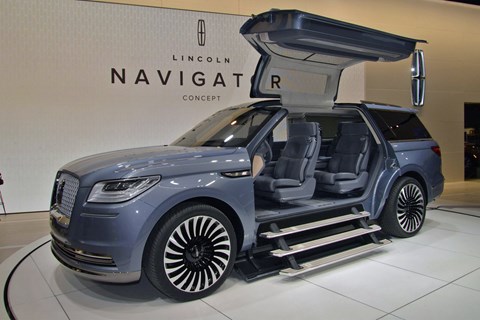
‘Hey guys, we heard you like Range Rovers so we, er, built you one!’ It wasn’t just the ever-popular luxury British SUV that Lincoln appeared to be aping, however; the grille looks distinctly Jaguar-like, while the access and egress-easing gullwing doors led everyone to immediately think ‘Tesla Model X’. The net result, either way, was to generate the effect that Lincoln appears flat out of ideas.
Does it really know what it’s doing, what it should be doing, or what it should look like? You’ve only to flip back to last year, when Lincoln revealed its Bentley Flying Spur-emulating Continental concept, to realise that the problem is not a new one. Does Lincoln genuinely think these are new ideas, or is it simply trying to ride on the coattails of other brand’s successes? With Ford trying to ‘unlearn’ itself and move certain models upmarket, you have to wonder if there’s really a need for its luxury arm any more…

Remember when the name Subaru would evoke a positive response from anyone even vaguely interested in cars? Be it due to the brand’s blue-and-gold WRC wonders, its characterful turbocharged 4x4s or oft-overlooked wonders like the SVX, it used to be a brand with some real cache.
These days, it seems set on releasing drab grey box after drab grey box. The New York motor show played host to the reveal of the ‘all-new’ Impreza which, alas, continues that trend. Despite being underpinned with a new platform, it effectively appears to be the same dull, generic product all over again. Sure, it’ll probably run for decades and won’t cost the earth, but the company needs to do better than that – especially when it’s the likes of the eager Mazda 3 and class-leading VW Golf sat on opposing forecourts.
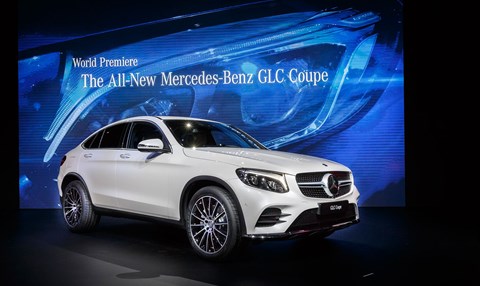
The Russian doll strategy appears to have taken hold at Mercedes in a big way. Every model in the company’s range appears to be available in every single body style under the sun – and then you’ve got the myriad AMG versions of the same cars again.
No doubt this has all been inspired by Audi’s similar approach in past years, which has seen countless derivatives creep into the top-ten best sellers lists in various categories, resulting in a useful uplift across the board – even if the company doesn’t lead the class in any one sector.
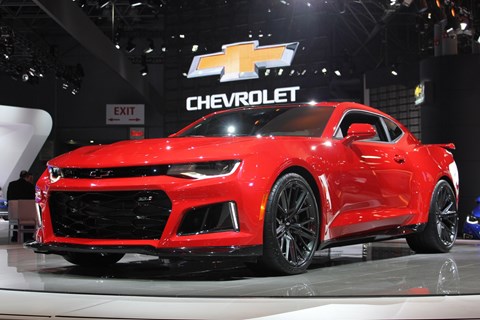
The 640bhp Camaro ZL1 took pride of place on Chevrolet’s stand, and quite rightly so. American performance cars seem to finally be shaking off the negative image they’ve possessed in the European market in the past few decades, no doubt thank to their ability to put up a seriously competitive fight against numerous high-end rivals.
You only had to look across the hall to see Ford’s furious Mustang Shelby GT350, the storming GT, and Chevrolet’s Corvette Z06. Power, poise and presence. Consider the key boxes ticked. Then, of course, there were hordes of 707bhp Hellcat-engined Dodges. Less capable in the corners, sure, but ready to deal out some serious pain on the straightaways.
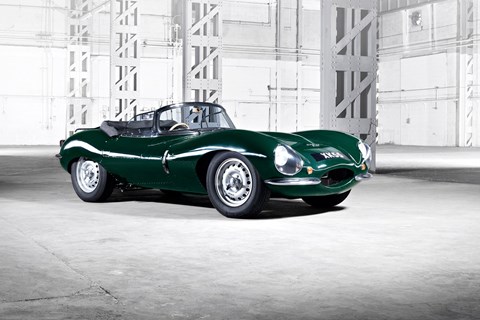
News of yet another heritage-raiding exercise from Jaguar. Hell, if you can drum up the interest to build nine incredibly time-consuming XKSS replicas for a million quid a pop, Jaguar, perhaps you could – you know – build a forward-looking supercar? We need to know what you can do, not what you did, as the former becomes the latter eventually – and you can’t go on recreating things.
If enough people are willing to stump up the cash for an XKSS that can’t be used in historic events, we’re sure that a market could be found for a production version of the likes of the C-X75 – even if you have to individually register each one. A little revisiting is all well and good, but it needs to be balanced with modern equivalents.
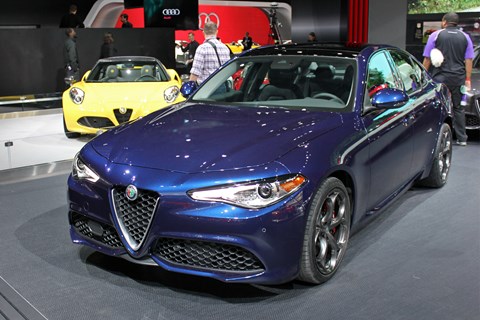
History tells us to prepare for the worst but we live in hope. You can forgive a few foibles but if the Giulia ends up lacking in certain key areas it will inevitably fall behind the likes of the ever-dominant BMW 3-series. Of course, we’ll reserve judgment until we drive it – and we sorely hope that Alfa pulls it out of the bag, particularly after the hodge-podge that was the 4C. One thing’s for sure: the Giulia was certainly getting an awful lot of attention in New York, for its muscular looks alone.
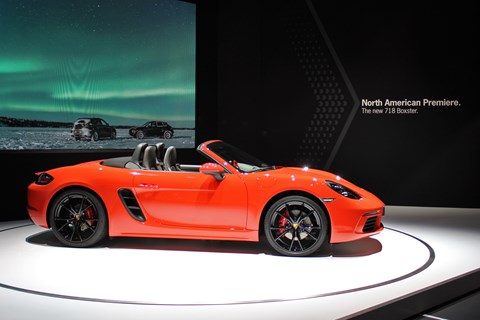
Every OEM in the western spiral arm of the galaxy is cutting displacements left right and centre, including supercar and sports car manufacturers. Porsche’s 718 Boxster was the latest example, ditching its naturally aspirated flat-six for a turbocharged flat-four. It makes sense: shrink the capacity, force feed the motor, cut emissions, boost economy and – in most cases – end up with more power. The additional flexibility of the turbocharged motors often makes them feel faster, too, so Joe Public ends up feeling immensely satisfied with their purchase.
However, one thing that doesn’t seem to be dropping is kerb weights, despite the prevalence of lightweight materials and reputedly better engineering and design. When the Boxster materialised in 1996, it weighed some 1252kg in base form. Now, however, it’s crept up to 1410kg. That’s a hike of 158kg – basically two passengers, if one was willing to hang onto the rollbar – and the Porsche is far from the worst example around.
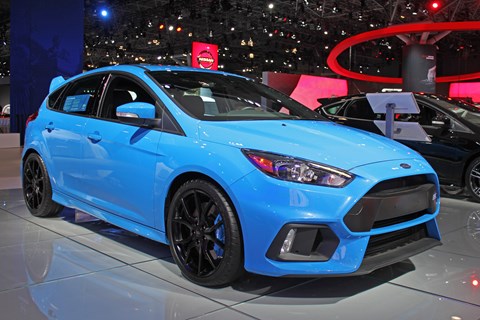
Didn’t matter where you looked at the New York motor show, as every manufacturer had a high-performance version of at least one of its line-up on display. Even though the sales figures might not be high, these street and track tearaways generate so much interest that brands can’t afford to overlook them. The Focus RS is a fantastic example, resulting in page after page of media coverage, endless forum discussions and numerous PCP quotes. After all, you don’t want your customer opting out of your range when they start looking for something a little warmer…
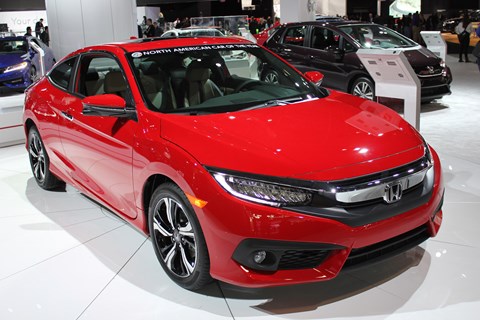
The little Honda Civic Coupe reminds us of simpler times. Here is a smart-looking 1242kg coupe that will run until the end of time and, with the right engine and transmission, probably be quite good fun to drive. It’ll likely do everything you could ever ask of it and be a trustworthy, cost-effective companion. It could be as dull as a dishwasher to drive but, as we don’t get it here and we have never driven one, we’ll have to hold fire on a final judgment. It certainly seems to have accumulated a number of accolades, though.
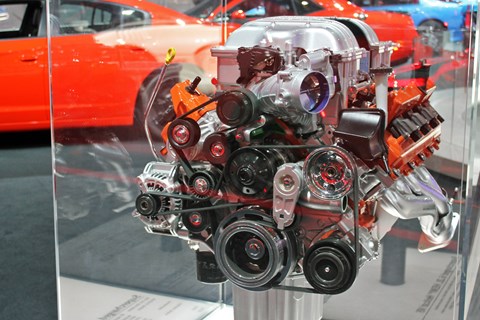
Dodge, Chevrolet, Ford and many others continue to use what countless people perceive as an archaic powerplant: the ol’ cam-in-block V8. Well, we think quite the opposite. That particular layout continues to be very effective in terms of packaging, component count and reliability. You can’t argue with the power and torque figures, either – particularly when the likes of the 6.2-litre Hellcat V8 put out 707bhp and 650lb ft, day after day. Good news on the efficiency front, too, thanks to cylinder-on-demand technology, improved combustion chamber design, lighter parts and better thermal management.
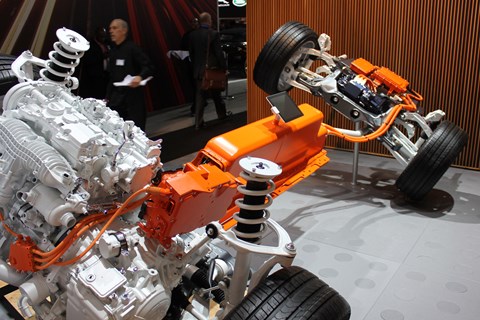
Volvo was proudly displaying a cutaway version of the running gear found in the latest S90 ‘Twin Engine’ hybrid, which features a compound-charged petrol engine, an eight-speed automatic, an electrically powered back axle and a high-voltage battery pack.
Unquestionably impressive engineering, but can you imagine trying to maintain this in six or so years’ time? Who, in their right mind, would want to mess with it? Similarly, will the manufacturers be able to ensure a sensible parts supply for the lifespan of their products, given the ever-increasing and ever-varied model ranges? An enterprising start-up might do well to prep for a potentially thriving business in keeping these things running.
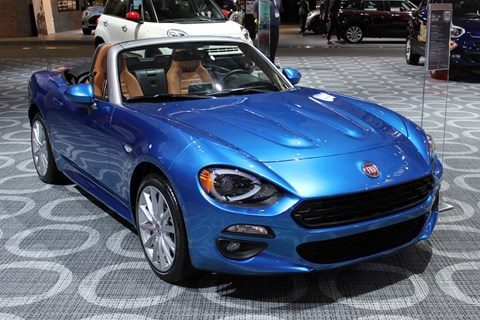
Buried deep in the convention centre, in one of the less heavily trafficked halls, was the Fiat stand. On display was the new 124 Spider, in a rather resplendent shade of metallic blue that we hadn’t seen exhibited on the compact roadster before. It far better suited the car than the dull greys or flat-looking reds we’ve been exposed to previously. We’re sure the extra punch from the turbocharged MultiAir engine won’t go amiss, either. Here’s to the road test…

You’re in New York. Like, slap-bang in the centre of it. Don’t restrict yourself to one of the generic food outlets in the show halls themselves; within a 15-minute walk you’ve access to local burger bars, coffee shops and more exotic fare like Go! Go! Curry!, which dishes out Japanese curry at a vast rate of knots. Take a break, enjoy the sun and get something proper to eat before diving back into the show.
See more from the New York motor show in our Facebook gallery
Read more of CAR’s 2016 New York motor show coverage here